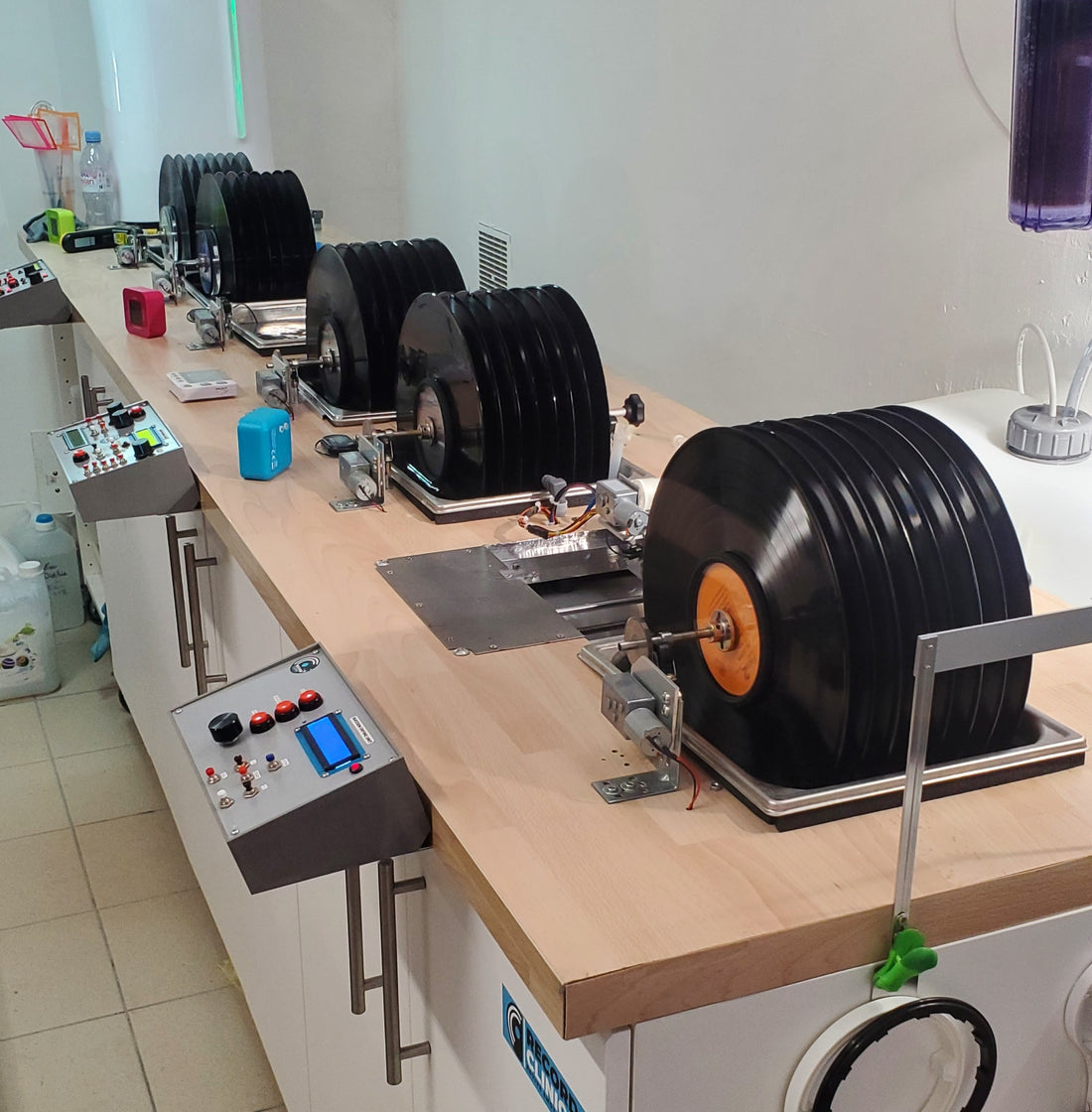
The Premium Record Clinic treatment
Share
At Record Clinic, we love vinyl records. But despite their tremendous musical qualities and the joy they convey, vinyl is fragile when misused and poorly maintained.
Similarly, we have observed the enormous qualitative gain brought about by perfect cleaning of the media, which very often equals or even exceeds the improvement brought about by the replacement of this or that equipment in a listening system, for an extremely modest investment.
We believe this is the root of the problem of faithful reproduction. There's no point investing in expensive equipment if your records aren't in the best condition: you don't eat off a dirty plate at a three-star restaurant!
So we analyzed, worked, tested, improved, and fine-tuned what we believe to be the most efficient system for perfect vinyl record cleaning. We developed a complex machine based on a process, that is, a series of operations designed to methodically resolve the problems posed by optimally conditioning the medium.
The Premium Process
The Record Clinic approach is to avoid any contact with the record that could cause abrasion or damage. This means brushes and any mechanical system that comes into contact with the media are out of the question. Since the process relies on fluid-based operations, it's important to ensure the quality of the main cleaning agent: water!
Water purification
Our water treatment system is designed to eliminate all traces of minerals and bacteria in the water we use. This is essential to prevent the sanding of the media during cleaning, and the deposit of mineral fillers in the grooves during drying, which would accelerate wear and cause crackling during playback. We therefore use cascade treatments to generate and maintain the purest water possible:
- Filtering of feed water,
- Water softening,
- Mechanical and resin filtration,
- Reverse osmosis,
- Elimination of microorganisms by UV.
This pure water is then used in all the steps below:
Disk Protection
The discs are arranged on an axis and separated by a waterproof protection of the macarons (central labels). These protections also space the discs optimally for cleaning steps.
Dusting
The dust removal bath, composed of pure water, is designed to remove all surface dust from the disc. No brushes or cloths are used to abrasion the disc's surface; instead, water is constantly stirred and filtered to 1 micron (1 millionth of a meter) to ensure the detachment and capture of these particles. The water is also heated to 25°C and maintained throughout the process, thus conditioning the media for further operations.
Pre-wash
The pre-wash stage uses an ultrasonic cleaning tank that operates at a 40kHz sweep frequency and aims to remove most of the particles, grease and soot from the disc. We rely on a special and extremely effective surfactant to improve the effectiveness of this ultrasonic cleaning.
The pre-wash solution is kept at a constant temperature and is continuously filtered to remove residues released into the bath.
Rinsing
The discs are then rinsed in a whirlpool bath of pure water, which removes the detergent used in the pre-wash step.
Washing
The washing step also uses an ultrasonic tank but which operates at a higher frequency (80kHz frequency sweep) and with an audiophile surfactant: Tergitol.
The use of this product, unanimously used by archiving professionals due to its safety and effectiveness on the media and acclaimed by audiophiles due to its low sound signature, is the guarantee of a high-level result.
Combined with a high ultrasonic frequency, the smallest particles are extracted from the disc, revealing all its micro-information and also limiting surface noise (hiss). This is the step that separates a classic cleaning from a high-precision cleaning with audiophile qualities.
For older records, a second washing sequence at 40kHz then at 80kHz helps dislodge the most encrusted particles.
As with the pre-wash, the bath is continuously filtered and kept at a constant temperature.
Final rinse
The records are rinsed again in a dedicated whirlpool bath of pure water. The goal is to remove the Tergitol to eliminate any sonic signature and leave only one thing on the record: water.
Drying
Record Clinic has developed a unique, robotic system to ensure the most efficient drying of records. We use what we consider to be the best technique: suction drying. The principle is simple and was developed by Keith Monks for the BBC in the 1960s (both Loricraft and Keith Monks still offer equipment using this technique).
Suction aspiration uses an extremely small nozzle (1 mm) through which a vacuum pump draws liquid from the surface of the disc. This nozzle does not directly touch the disc because it is separated from the surface by a continuously renewed wire. This allows suction, guarantees cleanliness and greatly limits the surface in contact with the disc.
This step therefore allows for perfect drying, limiting the risk of airborne dust deposits (unlike open air drying) and avoiding abrasion of the disc caused by a VRCM type suction arm.
Antistatic treatment
Simultaneously with drying, an antistatic treatment using ionized air is carried out. This treatment eliminates any residual electrostatic charge from the disc.
Packaging
The disc treated in our process is then stored in a new sub-sleeve, lined with HDPE (High Density Polyethylene with anti-static properties) in order to guarantee durability upon cleaning and to avoid any recontamination of the media with a soiled sub-sleeve.
